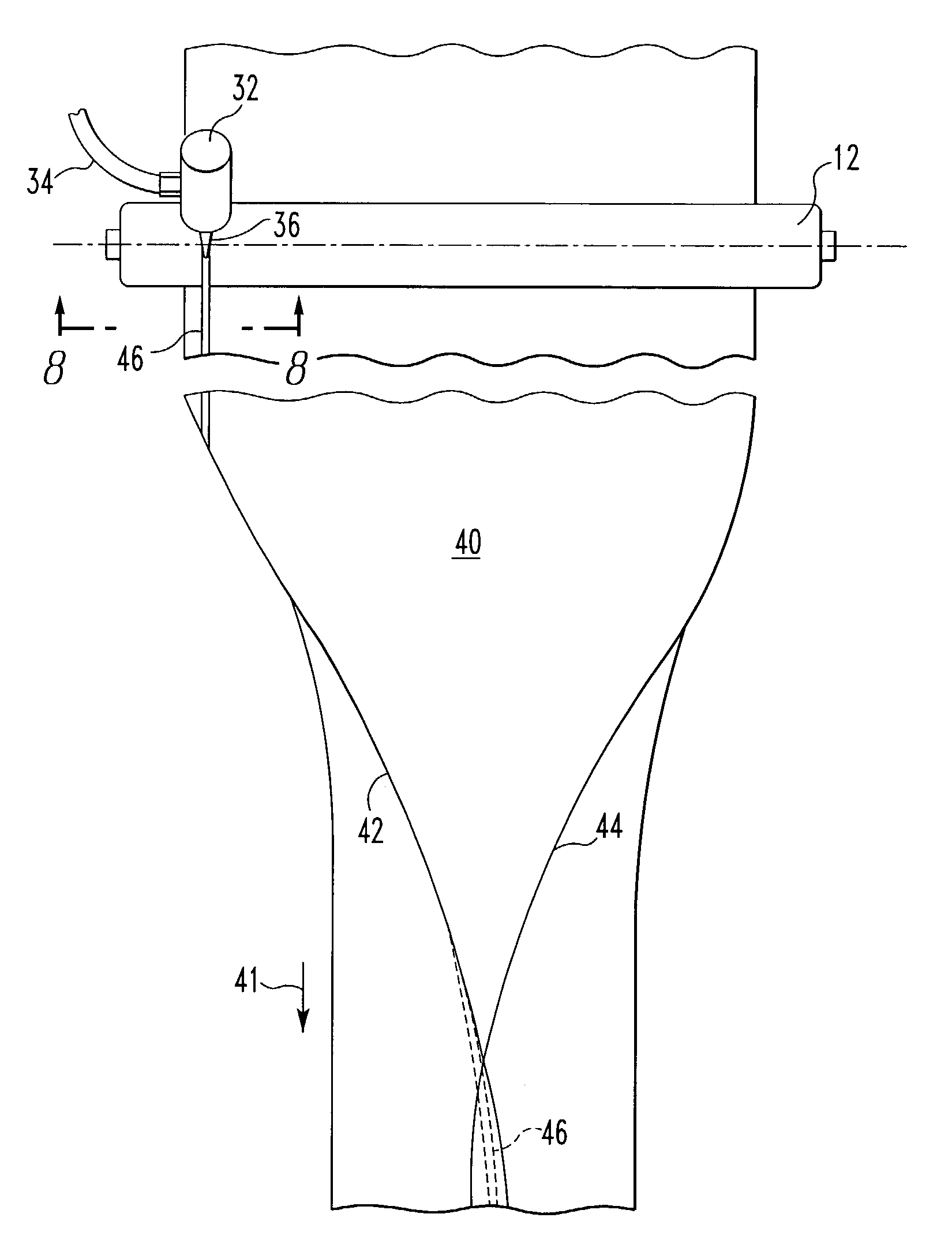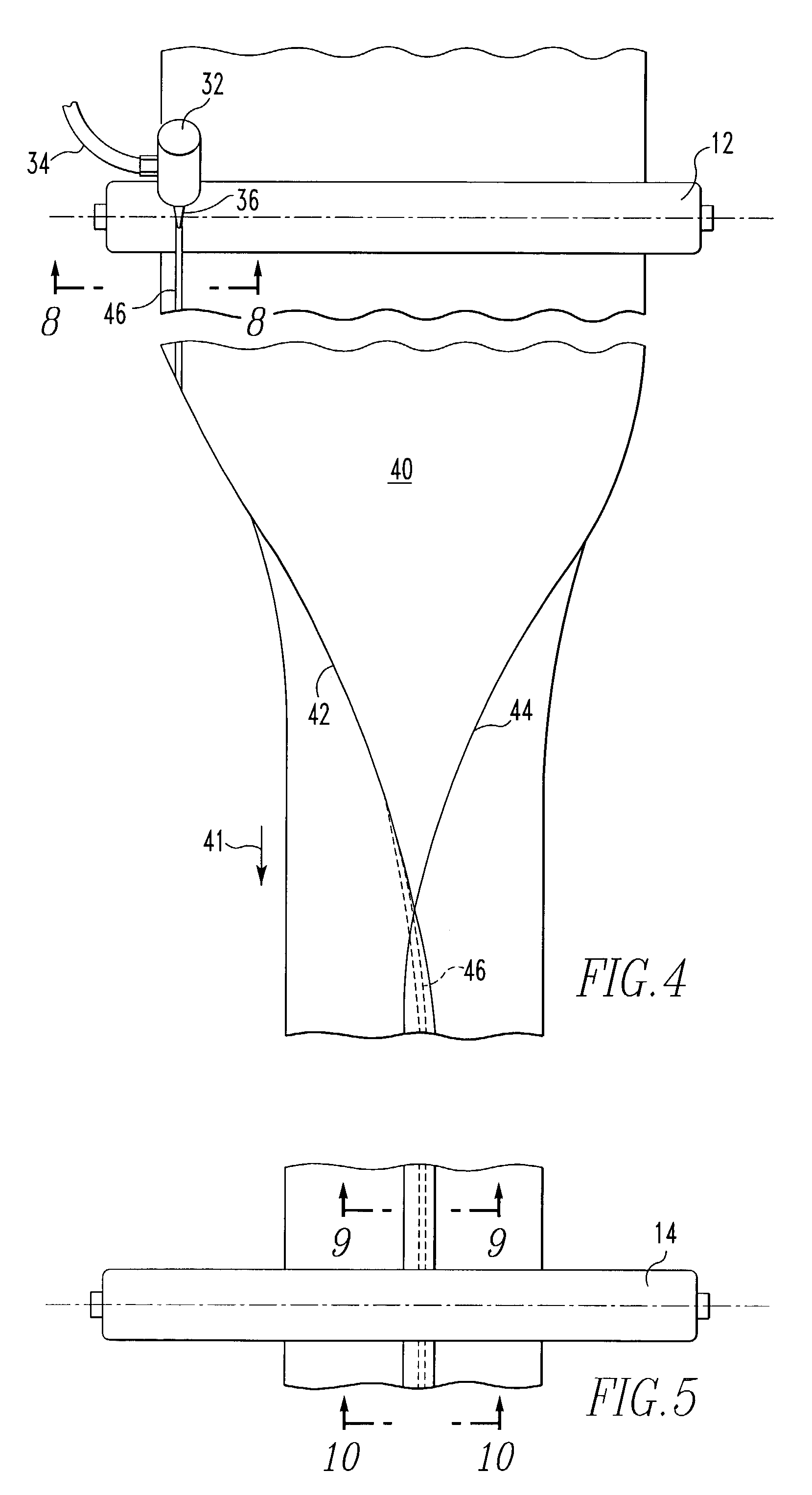Seaming plastic film using solvent-based adhesive bead
- Summary
- Abstract
- Description
- Claims
- Application Information
AI Technical Summary
Benefits of technology
Problems solved by technology
Method used
Image
Examples
Embodiment Construction
[0032]The following terms will be used throughout this application in accordance with these definitions, unless a different interpretation is required by the context. The term “solvent-based adhesive” means a flowable adhesive for plastic film, which adhesive contains a volatile organic liquid vehicle capable of dissolving the film. The term “round” and “rounded” refer to a circle, an oval, an ellipse, or a similar, closed, curved figure. The term “rounded hat-shape” refers to the profile of a man's hat having a rounded crown and a flat, substantially uniform brim. A campaign or “Smokey the Bear” hat is an example of such a hat. The term “film speed” refers to the line speed of the plastic film workpiece, including instantaneous as well as constant speed.
[0033]The present invention can be used to seam heat-shrinkable films such as polyvinyl chloride (PVC), glycol modified polyethylene terephthalate (PETG), and oriented polystyrene (OPS). The presently preferred solvent-based adhesiv...
PUM
| Property | Measurement | Unit |
|---|---|---|
| Time | aaaaa | aaaaa |
| Time | aaaaa | aaaaa |
| Diameter | aaaaa | aaaaa |
Abstract
Description
Claims
Application Information
 Login to View More
Login to View More - R&D
- Intellectual Property
- Life Sciences
- Materials
- Tech Scout
- Unparalleled Data Quality
- Higher Quality Content
- 60% Fewer Hallucinations
Browse by: Latest US Patents, China's latest patents, Technical Efficacy Thesaurus, Application Domain, Technology Topic, Popular Technical Reports.
© 2025 PatSnap. All rights reserved.Legal|Privacy policy|Modern Slavery Act Transparency Statement|Sitemap|About US| Contact US: help@patsnap.com



